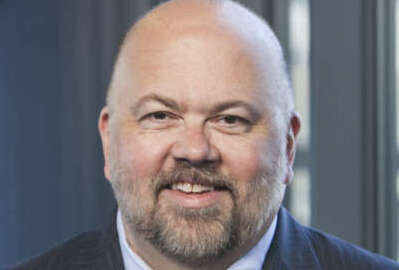
Reform, or the illusion of progress?
The federal government has been reorganized many times under new presidential administrations, and not always for the better.
“We trained hard … but it seemed every time we were beginning to form up into teams we were reorganized. I was to learn later in life that we tend to meet any situation by reorganizing, and a wonderful method it can be for creating the illusion of progress while producing confusion, inefficiency and demoralization.” — Gaius Petronius, a Roman author 66 A.D.
Whether Petronius actually said it or not, it is often quoted by people like myself who have gone through a number of reorganizations. Some were successful, and some not so much. People on the reform team can and do dismiss Gaius as an earlier bearer of fake news.
The federal government has been reorganized many, many times. Sometimes it was for the better, sometimes not. More often than not, nothing much happens. First comes a new administration and then the transition. At some point after the transition, reform, or at least an attempt at reform, follows.
The transition from the Clinton to the Bush administrations was marked by pettiness as some younger, presumably, White House staffers removed the letter “W” from computer keyboards. But both administrations proposed various kinds of civil service reform.
The formal transition from the Bush and the Obama administrations is considered by many to be one of the best, as in smoothest, in recent times.
As for the transition between the Obama and the Trump administrations, not so much. Whichever side you blame — childish, sulking outgoing Democratic staffers or incoming paranoid, anti-bureaucrat Republicans — probably depends on your vote.
The Clinton administration proposed to eliminate the 15 GS grades and set up a system where outstanding employees could be handsomely rewarded. Losers could be punished financially, maybe by losing annual leave, and fired more easily. Feds would have been ranked as either apprentices, journeymen or experts.
Interesting idea but it did not fly. Then-Vice President Al Gore lead the Reinventing Government movement which in the end produced more talk than action.
The Bush administration set up pay bands in the Defense Department which permitted managers to give bigger raises to top workers. Unions opposed the National Security Personnel System and Congress repealed it under former President Barack Obama.
After a very slow start — the director of the Office of Personnel Management was only confirmed March 7 — the Trump administration is preparing for a variety of reforms. Director Jeff Pon said the administration will concentrate on changing the way government recruits, rewards and manages employees to make it more businesslike. A streamlined firing system might also be in the mix.
In the meantime, the White House has proposed a 2019 pay freeze and Congress will again take a crack at retirement benefits changes that would force workers to pay more, as in a 6 percent cut in take-home pay, and receive less when they retire. Feds face a short but potentially brutal legislative year. The goal of groups representing workers and retirees is not to make any substantial gains, but rather to prevent any losses.
Meantime, prepare to be reorganized — again.
Nearly Useless Factoid
By Amelia Brust
The world’s largest waterfall is technically the Denmark Straigt cataract, which is underwater between Greenland and Iceland. Water from the Greenland Sea drops almost 11,500 feet into the Irminger Sea — more than three times the height of Angel Falls in Venezuela — and carries an estimated 175 million cubic feet of water per second.
Source: (Conde Nast Traveler)
Copyright © 2024 Federal News Network. All rights reserved. This website is not intended for users located within the European Economic Area.
Mike Causey is senior correspondent for Federal News Network and writes his daily Federal Report column on federal employees’ pay, benefits and retirement.
Follow @mcauseyWFED




